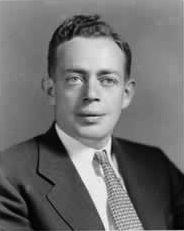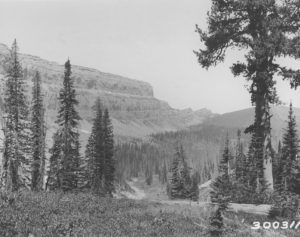The father of wilderness preservation, Bob Marshall, was born on January 2, 1901 (died 1939). Almost single-handedly, Bob Marshall convinced the world that preserving some wild lands, untouched by the works of humans, was an essential part of civilization. Although he lived for only 39 years, his impact has been immortal.
Robert Marshall was a product of his upbringing. He was born into a wealthy Jewish family in New York City. Both his parents were social activists, believing that the disadvantaged deserved a chance at a better life. Marshall himself grew to be an avowed socialist, committed to fight for the rights of the unrepresented (in later life, he was persecuted by the federal government for his communist leanings). But his father, especially, also loved the forest and the solitude it brought; he was a founder of the New York College of Forestry and Environmental Science (known today as SUNY-ESF in Syracuse). The family spent summers in the New York mountains, and young Marshall adopted that love of the outdoors.

He determined early that he would become a forester rather than a city dweller. He studied at the school established by his father, graduating with high honors in 1924. While a student, he established his lifelong practice of hiking and mountain climbing—20, 30, 40 miles per day. A day lasted 24 hours, he liked to say, so a day-hike should last 24 hours as well. By the time he was a junior in college, he had hiked to the top of the 42 highest peaks in the Adirondack Mountains, the first to do so. He set many other records for hiking and climbing, including climbing 9 Adirondack high peaks in one day.
Upon graduation, he began work in Washington State with the U.S. Forest Service. He worked for that agency on and off throughout his life. Along the way, he earned both Master’s (Harvard) and doctoral (Johns Hopkins) degrees. He traveled extensively throughout the West. He spent 15 months in Alaska’s Brooks Range living in a remote Native American village and exploring the region more extensively than anyone before (and perhaps since). His commitment to both wilderness and social causes emerged during that stay. He later wrote a book about his time in Alaska, devoting half his royalties to the Native Americans among whom he lived.
He lobbied actively for wilderness preservation throughout his career. As the head forester in the Bureau of Indian Affairs, he recommended nearly 5 million acres of Indian lands as wilderness areas. He was instrumental in writing prescriptions for roadless and wild lands for the Forest Service that eventually became the standards for their management.
He wrote what is considered the seminal treatise on wilderness—“The Problem of the Wilderness”—in 1930. “There is just one hope of repulsing the tyrannical ambition of civilization to conquer every niche on the whole earth,” he wrote. “That hope is the organization of spirited people who will fight for the freedom of wilderness.” Marshall was true to his mission. In 1935, he co-founded The Wilderness Society, which quickly became—and remains to this day—the primary non-governmental group advocating for wilderness. A bachelor made wealthy by inheritance from his parents, he devoted his entire fortune to social and wilderness causes, including leaving one-quarter of his estate to The Wilderness Society.
Marshall died unexpectedly on a train trip from Washington, DC, to New York City on November 11, 1939. The cause of death was listed as heart failure, which might have been brought on by his secret bout with leukemia.

His influence had been well established by then, however, and his legacy continues. In 1964, The Wilderness Act became law, establishing the category of wilderness as a specific use for federal lands. Today, the U.S. has 765 areas classified as wilderness, covering nearly 110 million acres—about 5% of the U.S. land surface. Some are large, like the 9-million-acre Wrangell-Saint Elias Wilderness in Alaska; some are small, like the 5.5-acre Pelican Island Wilderness in Florida. The Bob Marshall Wilderness Area was established in Montana, an area of 1.5 million acres generally considered to be one of the best preserved ecosystems in the world.
But all are meaningful, as Marshall himself said:
“Any one who has stood upon a lofty summit and gazed over an inchoate tangle of deep canyons and cragged mountains, of sunlit lakelets and black expanses of forest, has become aware of a certain giddy sensation that there are no distances, no measures, simply unrelated matter rising and falling without any analogy to the banal geometry of breadth, thickness, and height.”

References:
Madison, Erin. 2014. Marshall left a legacy in Montana’s largest wilderness. Great Falls Tribune. Available at: http://www.greatfallstribune.com/story/outdoors/2014/07/30/marshall-left-legacy-montanas-largest-wilderness/13388321/. Accessed January 2, 2018.
OurMed. Bob Marshall (wilderness activist). Available at: http://www.ourmed.org/wiki/Bob_Marshall_(wilderness_activist). Accessed January 2, 2018.
Wilderness Connect. Bob Marshall. Available at: http://www.wilderness.net/NWPS/Marshall. Accessed January 2, 2018.
Wilderness Connect. The Beginnings of the National Wilderness Preservation System. Available at: http://www.wilderness.net/NWPS/fastfacts. Accessed January 2, 2018.
